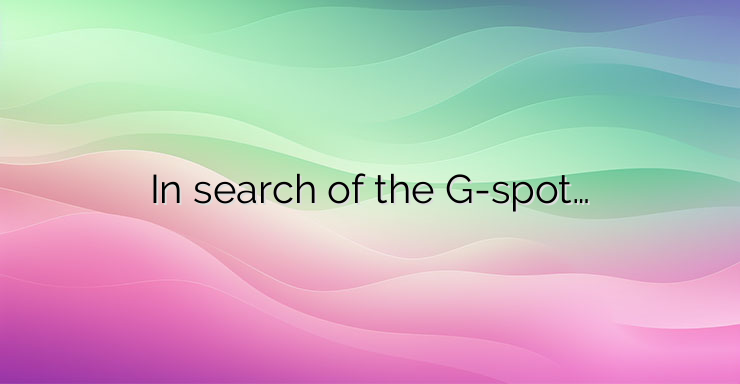There is still a lot of controversy about whether the G-spot really exists. The legendary female erogenous zone is not mentioned in gynecology textbooks, but this is not a prerequisite to believe that it does not exist. A little history… In 1944, the German gynecologist Ernst Grafenberg discovered an erogenous zone located near the front wall of the vagina, where densely intertwined nerves are concentrated. He claims that the stimulation of the given area leads to the swelling of the tissues and nerves in the area and, respectively, to the achievement of sexual pleasure and orgasm. The gynecologist also associates this zone with the phenomenal female ejaculation. Grafenberg’s scientific conclusions were published in the International Journal of Sexology in 1950. In 1981, Dr. Adiego and his colleagues published a report in the journal Sex Research based on data from a study of a woman who, when touched and stimulated on the frontal wall of the vagina teaches a “deep” orgasm. The study authors call this area the G-spot in honor of Grafenberg. In the 1980s and 1990s, a number of scientists tried to determine what the G-spot actually was, but had rather inconclusive results. The reason is due to the limited resources and possibilities for scanning the female genitalia. In 2008, with the advent of ultrasound in gynecology, new research is being done on the G-spot. Italian researchers from the University of Aquila carried out an ultrasound examination of 20 women. The results showed that about half of the participants had a “thickened” section of nerves between the vagina and the urethra, making them much more likely to have a vaginal orgasm, the research team documented. NEWS_MORE_BOX Vaginal orgasm is achieved by stimulating the vagina, not directly on the clitoris. Despite the data of the Italian researchers, part of the scientific community still remains skeptical about the existence of the G-spot. In January 2010, a team of researchers from King’s College London stated that “the G-spot does not exist”. Their claim is based on a survey of 900 women who were surveyed about the presence of this erogenous zone in them. Within just one month, French gynecologists disputed this claim and stated that 56% of women have the G-spot in question. And although there is still no hard evidence of its existence, while wandering through questions and answers we can try to find it ourselves. Stimulating the G-spot leads the woman to ecstasy. It is only necessary to use intuition, fantasy and show a little creativity and, of course, to act. Certain poses can also help with this. You just have to find the right one that helps stimulate the front wall of the vagina.


Leave a Reply